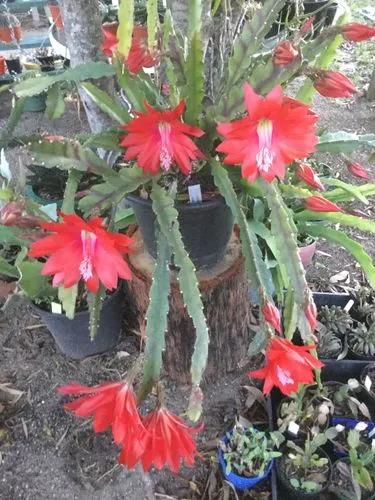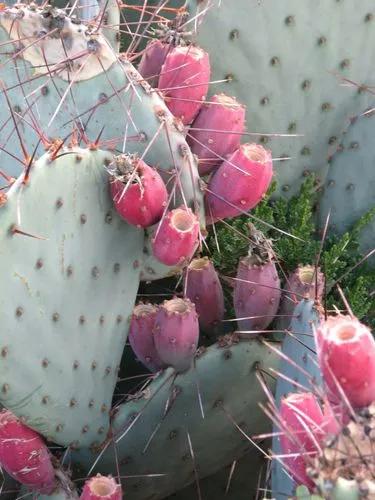Opuntia santarita (Santa Rita Prickly Pear) is an upright, bushy succulent shrub with colorful, round, ovate, fleshy pads. Covered with spines, the pads turn rich purple in winter before changing back to soft blue gray with warmer temperatures.
Opuntia Santa Rita Care
Opuntia Gosseliniana



How to Care for the Plant

Water

Santa Rita prickly pear tolerates a wide variety of soils as long as they are well-draining. Provide a raised bed if necessary, or plant it on a slope. The plant stores water in its flattened, jointed stems which are called pads or paddles. During its first year, water it once a month during summer if rains are lacking. Once established, plants are very drought-tolerant, needing only occasional watering in the hottest summer months. Water thoroughly when the pads become thinner and aren't as plump. When the cactus is drought-stressed, the pads may even look a little wrinkled, but they'll recover once you water the plant. Allow the soil to dry out between waterings. Too much water will decrease the purple pad coloration, which intensifies in direct sunlight, drought and cold. The variety "Tubac" has a rich purple pad color in winter and is hardy in USDA zones 8 through 11.

Pruning

Santa Rita prickly pear doesn't need pruning except to keep it to size or to remove pads for propagation. To remove pads, grasp them with kitchen tongs and cut them off at the base using sharp pruning shears that have been dipped in rubbing alcohol. Before working with Santa Rita prickly pear, wet the cactus down to prevent the fine spines, called glochids, from floating loose from the pads. The glochids are a skin irritant and can get in eyes, nose and respiratory passages, where they can be a breathing hazard. To propagate Santa Rita prickly pear, remove pads in spring or summer. Place a cut-off pad in the shade for a few days to allow the cut end to heal. Put the bottom end in soil, either directly in the garden or in a container that has holes, burying it only sufficiently to hold the pad upright. It should root within a few weeks.

Fertilizer

In summer and on mature pads, the cactus is bluish-green in color. Santa Rita prickly pear generally doesn't need fertilizing.

Soil

Performs best in full sun or light shade, in well-drained soils. This plant tolerates a wide variety of soils as long as they are well-draining.

Temperature

10° to 20°F (-12° to -7°C)

Additional

Toxicity: Non-toxic to cats, dogs and humans, however be cautious around the spines as they can can cause injury. Description: Opuntia santa-rita is an erect, bushy succulent shrub to 2 m high and 3 m wide with a distinct, though short trunk. It a very attractive species with reddish or violet-purple pads. Small plants seem to be the most colorful.

Popularity

47 people already have this plant 22 people have added this plant to their wishlists
Discover more plants with the list below
Popular articles






